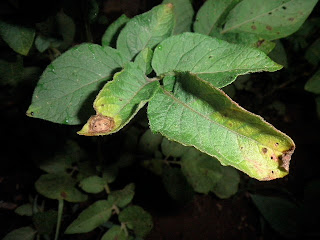What a summer? Last week was mild heat almost like fall and this week is so hot, humid and hazy. But the tomatoes, basil and peppers like it !Berries !
We have blueberries, strawberries and red raspberries.
All of them require different treatments to yield a descent amount of fruit.
For example,
Strawberries need to be rotated in the garden, they need to be thinned out and every 3 years, you should get a new set of strawberries. Oh, and most importantly if you live in the woods like us, it pays off to protect them from chipmunks and squirrels. They would eat even the unripe ones with a tiny speck of red in them...
Also, keep in mind that all the berries prefer an acidic soil, so mulch heavy with pine needles in the spring or when you have access to pine needles.
Air circulation is another factor to keep plants happy. If the plants are too close together, then they are more susceptible to disease. Our strawberries got these black and red blotches on the leaves and I figured it was because they were too close together. Another reason to leave them plenty of space, is size of fruit ! The more space per plant, the more energy goes into the fruit for that particular plant.
Blueberries are easy to grow and maintain. There are two types low bush and high bush. We have high bush and they are about 5 + years old. You have to prune them in the spring. Leaving only the highest branches at a time. Mulch with pine needles and compost, they have very superficial roots, so keep the area around the plant weed free. Birds love the berries, but so far, we have a good harvest this year.
Raspberries are tricky. Depends on the variety, and if they are summer or fall bearing raspberries, then you trim them differently. We have both varieties and in October of last year, we were still eating raspberries. Trimming can happen in the fall or spring. In the spring, you will notice the canes, called primocanes, that grew last year and those are the ones that will give you fruit from summer bearing raspberries. Also, the fall bearing canes, will give you fruit in primocanes and floricanes (last years canes, that now bear flowers). For both, cut any dead canes and you can tell by the color of the canes and any suckers (which are small useless canes that sprout near the main canes). You want to use garden shears and cut as low to the ground as possible, so that the plant grows new canes that are stronger and bigger for next year's harvest for summer bearing plants or for this year's harvest in fall bearing plants. You want to keep the plants lined up in a row and trellis them too, otherwise, they will conquer your free garden space!
I trellis ours by putting a strong bar/stick on either end of the row of plants and run wire from either side of the row connecting it to the end sticks. One wire goes about 2 ft of ground and next wire goes 5 ft from ground, both are running parallel to the ground and then, attach the canes to the wires with twist off pieces of wire. These set up will help you support the plants when they are heavy with fruit.
They need air circulation to prevent leaves from dying and disease.
Freezing berries will be my recommendation to make smoothies in winter, pancake sauces or fruit leathers!
















